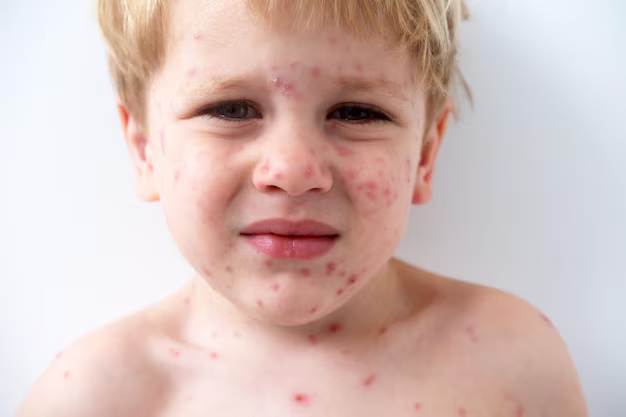Understanding Chickenpox: How It Spreads and What You Can Do
Chickenpox may sound like a childhood rite of passage, but understanding how it spreads is crucial for preventing unnecessary exposure and discomfort, especially among those who are at greater risk of serious complications. With each sneeze, cough, or brush against an infected person, the varicella-zoster virus looks for new hosts. But how does this happen, and what can you do to minimize the chances of catching it? Let’s dive into the mechanics of chickenpox transmission and explore practical steps to protect yourself and your loved ones.
What is Chickenpox?
Chickenpox, known medically as varicella, is a contagious infection caused by the varicella-zoster virus. It commonly affects children but can occur at any age. Before the introduction of the varicella vaccine, chickenpox was considered a common childhood disease.
Symptoms of Chickenpox
Typically, chickenpox presents as an itchy rash with up to 500 blister-like lesions across the body. Other symptoms include:
- Fever
- Headache
- Tiredness
- Loss of appetite
The rash usually appears first on the back and face and spreads to the rest of the body, being most prominent on the chest and back.
How Does Chickenpox Spread?
The contagious nature of chickenpox is a result of its efficient modes of transmission. Understanding these can help in implementing preventive measures.
Airborne Transmission
Chickenpox spreads through the air when an infected person sneezes or coughs. The virus is present in the droplets, which can be inhaled by someone nearby. This airborne transmission is particularly challenging to prevent, especially in close quarters like homes and schools.
Direct Contact
Touching items or surfaces contaminated with the virus from the rash or blisters of an infected person can also lead to infection. This makes personal hygiene and awareness crucial in preventing spread through direct contact.
Period of Contagiousness
A person with chickenpox is contagious from 1 to 2 days before the rash appears until all the blisters have crusted over, which typically takes about a week. This period is crucial for isolation to prevent new infections.
High-Risk Groups
While chickenpox is often mild, certain groups can experience severe complications. These include:
- Infants
- Pregnant women
- Individuals with weakened immune systems
For these groups, it is especially important to be vigilant about exposure and consult with healthcare providers about prevention strategies.
Complications of Chickenpox
In some cases, chickenpox can lead to more serious health problems, such as:
- Bacterial infections of the skin
- Pneumonia
- Encephalitis (inflammation of the brain)
- Septicemia (infection in the bloodstream)
Awareness of these complications emphasizes the importance of preventative measures and early detection.
Prevention Strategies
Given its high contagiousness, the best preventive strategy against chickenpox is vaccination.
Vaccination
The varicella vaccine is highly effective at preventing chickenpox. It is usually administered in two doses:
- The first dose is given at age 12 to 15 months.
- A second dose is administered at 4 to 6 years of age.
For those who have never had chickenpox or the vaccine, receiving it later in life can still provide protection.
Hygiene Practices
Implementing good hygiene practices can help decrease the risk of spreading chickenpox:
- Frequent handwashing with soap and water
- Avoiding close contact with infected individuals
- Cleaning and disinfecting commonly touched surfaces
Practicing these behaviors can assist in reducing the spread of the virus.
Exposure and Next Steps
If exposed to chickenpox, understanding your immunity status and monitoring for symptoms is critical.
Check Immunity
People who have had chickenpox or the vaccine are generally immune. If unsure of your immunity status, a healthcare provider can conduct a blood test to check for varicella antibodies.
Monitoring for Symptoms
After exposure, observe for signs of chickenpox for up to 21 days. Should symptoms appear, limiting contact with others, particularly high-risk individuals, is advisable.
When to Seek Medical Attention
While most cases of chickenpox do not require special treatment, seek medical advice if you or your child experience:
- Confusion or unusual behavior
- High fever (104°F or above)
- Difficulty breathing
- Severe headache or vomiting
Medical consultation in such cases can provide reassurance and determine if additional care is necessary.
Conclusion: Safeguarding Against Chickenpox
By understanding chickenpox’s transmission pathways and implementing preventive measures like vaccination and good hygiene practices, it is possible to significantly reduce the spread of this infection. Staying informed about high-risk groups and potential complications further empowers you to protect yourself and those around you. Awareness and proactive steps are key in managing chickenpox exposure and minimizing its impact on your health and community.
Key Takeaways 📝
- How Chickenpox Spreads: Through airborne droplets and direct contact with blisters.
- Who’s at Risk?: Infants, pregnant women, and those with weakened immune systems.
- Preventive Measures: Regular handwashing, vaccination, avoiding contact with infected individuals.
- Vaccination Schedule: First dose at 12-15 months, second dose at 4-6 years.
- Post-Exposure Steps: Verify immunity, monitor for symptoms, seek medical advice for severe cases.
By adhering to these guidelines, you can play a proactive role in curbing the spread of chickenpox and safeguarding public health. 🌟 Stay informed, stay safe!

Related Articles
- Can Adults Get Chickenpox
- Can You Contract Chickenpox From Shingles
- Can You Get Chickenpox Twice
- Can You Get Shingles If You Had Chickenpox
- Can You Get Shingles If You Never Had Chickenpox
- How Chickenpox Transmitted
- How Do You Get Chickenpox
- How Long Does Chickenpox Last
- Is Chickenpox Airborne
- Is Chickenpox Spreadable